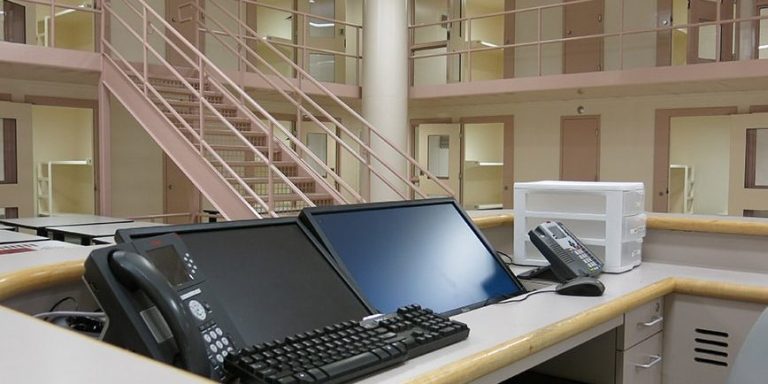
Why Tone Matters in Decision-Making
This edition of Correctional News has been devoted to the applications of security electronic systems in jails and prisons. The U.S. companies in this business are industry leaders, and their systems and products are constantly evolving as the role of incarceration changes. It is this latter point that I want to spend a few words addressing as we examine trends.
Other contributors have offered metrics regarding the use of security electronic applications ranging from movement detection to tele-visiting, to remote surveillance and controls. We are right to stay abreast of constant changes in these applications because, on average, they represent from five to 15 percent of the cost of new-facility construction. For renovations and retrofit projects, the percentage of the total capital investment for security electronic systems can go much higher.
When making big decisions on a project, like a security electronic system upgrade, for example, tone is important. Let me explain what I mean when I use the word “tone,” relative to jails and prisons. As a physical building that houses people engaged in a range of activities that are the result of their crime, the combination of management, operations and design establishes the general character, attitude and image of the establishment. Tone is like good art: hard to describe, but apparent when you see it. It evokes a certain feeling, awareness or consciousness.
I’ll offer an example in a broad context of a correctional system. An article in The Globe and Mail, a Canadian news source, had a simple headline: “Federal prisons have become less deadly, crowded under liberals, numbers show.” The article goes on to say that, since the federal election in Canada a year or so ago, administrative segregation placements are down 23.4 percent, suicides down 69.2 percent, double-bunking down 24 percent and, among many other statistics, internal complaints are down 27.6 percent. Reading this, a certain “tone” of the progress of the new government is established. The majority of those commenting on the article, however, weren’t buying the assignment of apparent progress to the new government, but agreed that the tone of the piece did suggest just that.
The image of incarceration depends on many variables from the anticipated behavior of the inmates to the attitudes of staff; from the visual character often established by the perimeter to the use of natural light in the housing units. These, and many other variables, establish the character or tone of the facility. Inmates know it, as do staff, and the public forms an opinion from impressions offered by the media or friends from the “inside.” My point that making choices for every aspect of operations and design contributes to the tone of the facility and the decisions on the use of electronic security systems have become high-value contributors to tone, even if invisible.
In a South University article entitled, “Prison Security Goes High Tech,” Denny Powers, criminal justice program director at the university, said, “A layout that includes a central control room that provides corrections personnel a 360-degree view of inmates, coupled with video surveillance, makes prisons safer and requires fewer correctional personnel for surveillance.”
While I know his opinion is shared by many, I also know the “success” of this model depends heavily on electronic surveillance. One cannot reduce and isolate staff and observe inmates without electronic security systems to underpin this mode of operations.
The ah-ha moment here is the result of choosing to reduce staff by using electronic security systems will trigger a bundle of other choices regarding classification of inmates, mission of housing units, cell assignments, out-of-cell time, movement, acceptable noise levels, staff training, maintenance schedules and budget, and so many more. Making these choices should involve an evidence-informed discussion between architects, operational staff, equipment representatives, fiscal officers, inmates, environmental psychologists and maintenance staff.
And that brings us back to where the trends are heading with electronic security; apparently, the options are limitless. I attended a presentation of a robot that could sense the emotions of prisoners in Kuala Lumpur, a perimeter lighting fixture that operates off of wind and sun in South Carolina and jail-issued interactive tablets in Idaho.
All of this development places an enormous responsibility on decision-makers and should encourage a broad debate on the topic of tone. For certain, a fairly constant percentage of inmates will require the use of electronic security applications to securely contain, control and observe them. At the other end of the scale, an increasing number of offenders, due to electronic surveillance methods, will be monitored in the community.
While the conversation about reducing recidivism remains relevant at all levels of government, this expectation for our incarceration facilities should enliven the discussion of the appropriate use of electronic security systems in new and existing facilities. The decision regarding how much to rely on staff or electronic devices to be the arbiters of behavior change is crucial to public safety and crime reduction.
You know how we often might comment that the “tone of the conversation” was encouraging, disappointing, informative or insulting? I believe that the manner in which we rely on electronic security systems to define the tonal characteristics of a jail or prison speaks volumes about what we stand for as a society.
***
This post originally appeared in the May/June 2017 issue of Correctional News Magazine.





